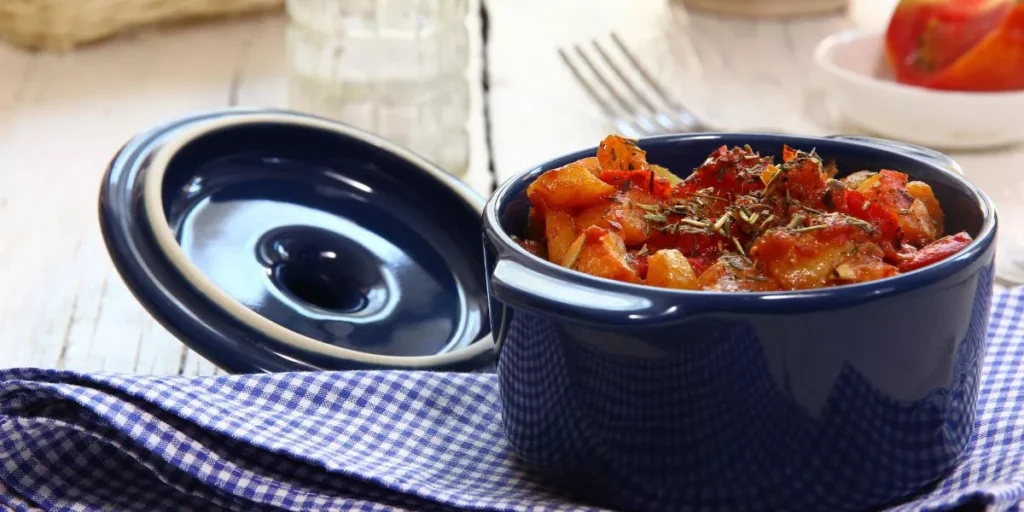
To truly master the art of braising and unlock a world of richer flavors in your cooking, there are key techniques and nuances that can make all the difference. Imagine the satisfaction of creating dishes that are not just cooked but transformed into succulent masterpieces bursting with complex tastes. By understanding the science behind braising, honing your skills, and experimenting with various ingredients, you can take your culinary creations to a whole new level. The journey to perfecting the art of braising is an exploration worth embarking on—one that promises to tantalize your taste buds and elevate your cooking prowess.
Benefits of Braising
Why is braising considered one of the most flavorful cooking techniques?
Braising involves cooking food slowly in a closed pot with some liquid, often resulting in tender and succulent dishes.
The benefits of braising are numerous. Firstly, this method allows tough cuts of meat to become tender and juicy as the low, slow cooking breaks down the connective tissues.
Secondly, braising helps meld flavors together, creating depth and complexity in dishes that are truly satisfying to the palate.
Additionally, the liquid used in braising can be infused with herbs, spices, and aromatics, imparting a rich and aromatic essence to the final dish.
Moreover, braising is a forgiving technique, making it ideal for beginners and experienced cooks alike. The gentle cooking process minimizes the risk of overcooking, giving you a wider margin of error.
Essential Braising Equipment
To braise successfully, you’ll need a few key pieces of equipment to ensure your dish turns out perfectly. The most essential item for braising is a heavy-bottomed Dutch oven or a braising pan. These pots distribute heat evenly and retain it well, allowing for slow and consistent cooking, which is crucial for developing rich flavors in braised dishes.
A good pair of tongs is also indispensable for handling the ingredients during the searing and braising process. They help you easily turn and transfer the meat without losing any flavorful juices. Additionally, a sharp knife for prepping ingredients, such as trimming excess fat or cutting vegetables, is a must-have tool in your braising arsenal.
Lastly, having a tight-fitting lid for your braising pot is crucial to keep moisture locked in during the cooking process. This helps ensure that your meat stays juicy and tender while infusing all the flavors from the braising liquid. With these essential pieces of equipment in your kitchen, you’ll be well-equipped to master the art of braising and create deliciously rich and flavorful dishes.
Tips for Preparing Ingredients
Begin by ensuring all your ingredients are properly trimmed, sliced, and seasoned before you start the braising process. Properly trimming excess fat from meats not only enhances the final flavor but also prevents excessive greasiness in your braising liquid. When slicing vegetables, aim for uniform pieces to ensure even cooking. Seasoning your ingredients with salt and pepper before browning them adds layers of flavor to your dish. Additionally, consider marinating tougher cuts of meat beforehand to tenderize them and infuse them with extra taste.
Take the time to gather all your ingredients and have them prepped and ready to go before you begin braising. This won’t only streamline the cooking process but also prevent any last-minute scrambling or overcooking while you search for that one missing ingredient. By having everything prepared in advance, you can focus on the braising technique itself, ensuring a delicious and well-executed final dish.
Mastering Braising Techniques
Exploring different cooking times and temperatures is key to mastering braising techniques. By adjusting these variables, you can achieve the perfect balance of tenderness and flavor in your braised dishes. Start by searing your meat to lock in juices, then lower the heat, add liquid, cover, and let the magic happen.
Consistency in heat is crucial; a gentle simmer ensures the meat cooks evenly without drying out. Remember, low and slow is the way to go for tender, melt-in-your-mouth results. Don’t rush the process – allow the flavors to develop over time.
Experiment with different liquids like broth, wine, or even beer to infuse your dish with depth and complexity. The liquid should partially cover the meat but not drown it. This creates a steamy environment that helps break down tough connective tissues.
As you gain experience, you’ll learn to trust your instincts and adapt recipes to suit your preferences. Whether you’re braising short ribs, chicken thighs, or vegetables, mastering these techniques will elevate your cooking to new heights.
Trending Products














